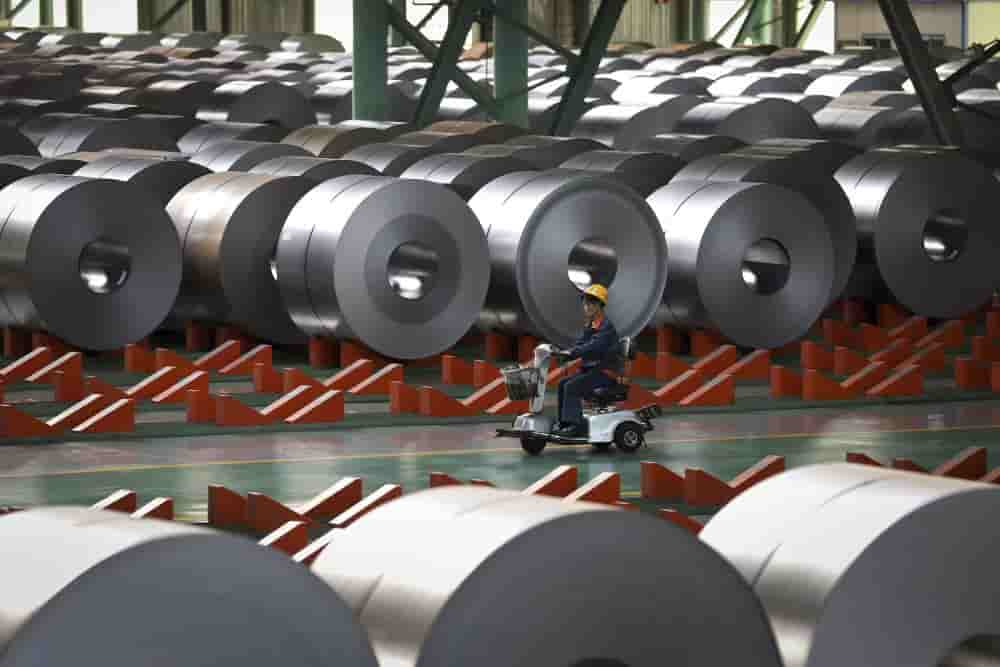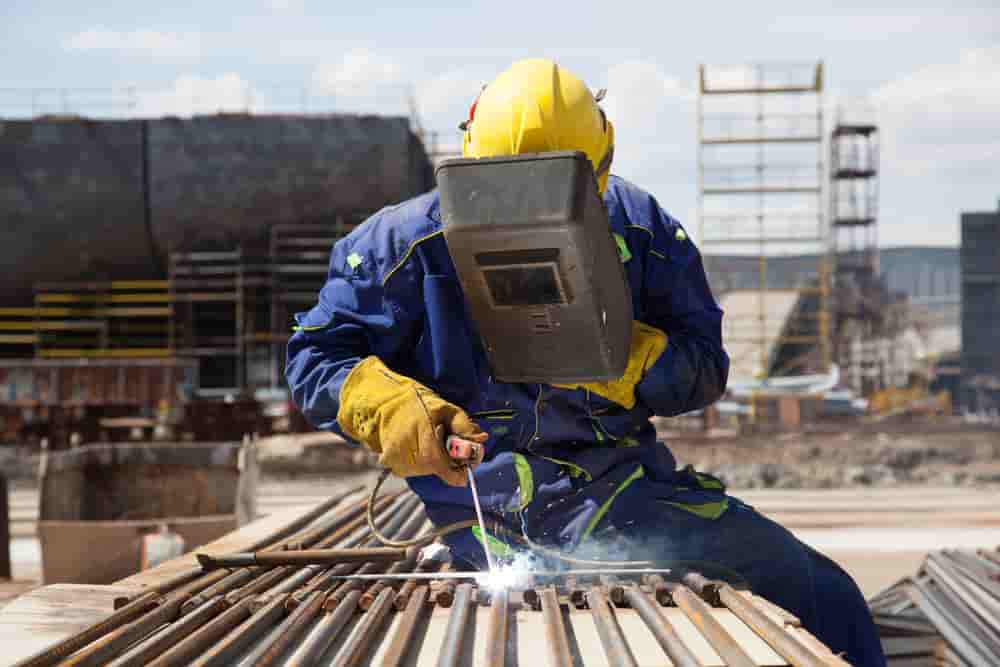One can create an item out of stainless steel in one of two ways: products might be manufactured by first forging, then rolling, and finally welding raw steel pieces together. It’s also possible that it’s made by pouring molten steel into a mold that’s already been shaped like the finished product. Which manufacturing method of stainless steel is the more efficient one is dependent on the product being made and the potential applications for the product.
The manufacturing procedure for stainless steel.
The production of stainless steel is a multi-step process that begins with the melting of steel scrap, followed by casting in a solid shape, heat treatment, cleaning, and polishing.

The process of melting and casting
Forming
Treatment with heat
Descaling
Work hardening
The process of cutting or machining
Finishing
The process of melting and casting
An electric arc furnace receives steel and various metals that are used for alloying. Once the metal is in the furnace, it is heated to a temperature that is well over its melting point, which is often higher than 2800 degrees Fahrenheit. The melting stage often takes between eight and twelve hours due to the extremely high temperatures, precision, and enormous volumes that are required. During this portion of the process, steel workers continually monitor the temperature of the bath as well as its chemical make-up.
After the steel alloy has been wholly melted, the mixture is subjected to further processing. Argon gas and oxygen are injected into the furnace, and once there, they convert some impurities to gas and induce others to produce slag, both of which are easier to remove.

The refined steel is cast into various shapes, such as blooms, billets, slabs, rods, and tube rounds, before being used for the majority of applications.
These are going to be the raw components that go into making the wrought items. Foundries are able to cast stainless steel into the shape it is meant to take once the appropriate mold has been created. Machining may be used on this shape as a finishing step rather than a manufacturing step because it is already in its final form.
Forming
The slab, bloom, or billet is heated and then passed through large rollers, which stretches out the steel into a form that is longer and thinner. Hot rolling is the method that is used to produce the majority of cast steel.
The steel is heated to a temperature that is higher than its recrystallization point, and then it is rolled hot. Blooms and billets are formed into wires and bars, while each slab is transformed into a sheet, plate, or strip.
When greater accuracy in dimensions or a superior surface shine are required, cold rolling is the method of choice. It happens at temperatures lower than the temperature at which steel recrystallizes. When using cold rolling, smooth, wide sheets of stainless steel with near tolerances can be created using wheels with a small diameter and a sequence of supporting wheels.

Treatment with heat
The recrystallization of the rolled stainless steel’s distorted microstructure during the heat treatment process results in increased strength. Annealing is the most common form of heat treatment for stainless steel.
After being heated to a precise temperature that is higher than the stainless steel’s crystallization temperature, the material is allowed to slowly cool while being subjected to carefully regulated circumstances. This procedure alleviates the internal stresses that are present in the stainless steel and softens it.
The qualities of the finished steel are affected not only by the annealing temperature and duration but also by the cooling rate.
Descaling
In the process of rolling stainless steel, a layer of oxidized “mill scale” forms on the surface, which, in order to restore the lustrous surface finish, needs to be removed by washing.
In most cases, the removal of mill scale is accomplished through the use of chemical processes such as electro-cleaning and pickling. During the pickling process, the stainless steel is soaked in a solution of nitric acid and hydrofluoric acid.

In the process of electrocleaning, a cathode and phosphoric acid are utilized in order to apply a current to the surface of the stainless steel. The descaled metal is given a final washing with high-pressure water, which results in a smooth surface that is brilliant and shining.
Work hardening
The process of work hardening involves the material being deformed in order to provide a strengthening effect. In general, stainless steels harden quite quickly; however, the exact rate at which they do so is dependent on the grade. When compared to other grades of steel, austenitic steel readily hardens.
The process of cutting or machining
The stainless steel is then fabricated into the desired form and dimensions. Shearing it with circular knives, sawing it with high-speed blades, or blanking it with punches are all options for working with stainless steel. Alternate means of cutting are sometimes utilized, and some examples of these include flame, plasma, and waterjet.
This cutting and machining stage may simply consist of cleaning join lines, bringing measurements to precise tolerances, or creating a surface finish for objects that have already been cast at a foundry and are therefore very close to their final form.
Finishing
A wide variety of surface treatments can be applied to stainless steels throughout the manufacturing process. The surface finish that was chosen is not selected solely for its aesthetic value. Stainless steel can be given various finishes that improve its resistance to corrosion, make it simpler to clean, or make it more suitable for use in manufacturing. The final product’s intended use will dictate the type of finish that is applied.
Fabrication procedures and finishing methods both contribute to the final surface finish by combining their efforts. A dull finish is achieved through the processes of hot rolling, annealing, and de-scaling.
A shiny finish is achieved by first rolling the material with hot rolls, then rolling it with cold rolls that have been polished. A reflecting surface can be achieved using a process that combines cold rolling, annealing, and polishing on a surface that is already fine. In order to finish the surfaces of stainless steel, a wide variety of grinding, polishing, buffing, and sandblasting equipment is utilized.

Control and examination of the quality
Even though there are in-process controls in place throughout the production and fabrication of stainless steels, these controls are often insufficient to achieve the quality requirements required by international organizations. Each batch of stainless steel must first be put through a series of chemical and mechanical tests to ensure that it satisfies the requirements laid out in the specifications before it can be exported.
Examining via mechanical means
When stainless steel is subjected to mechanical testing, it is evaluated to determine how well it can physically endure loads, strains, and impacts. The tensile, Brinell, and toughness tests are all examples of mechanical testing. They are detailed in greater detail under the section on mechanical properties.
Examination of chemicals
Before certifying the stainless steel grade, chemical tests examine the sample to determine its exact chemical composition. Spectrochemical analysis, which does not destroy the sample, is typically used to conduct testing on chemicals.

When it comes to stainless steels, corrosion resistance is something that is of utmost importance. Salt spray testing is used by steel mills to test and assess the corrosion resistance of steel; the length of time that steel remains unaffected by corrosion after being exposed to salt spray is directly correlated to the steel’s level of corrosion resistance.











Your comment submitted.